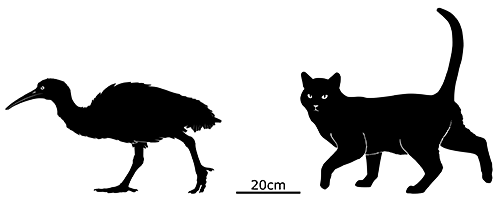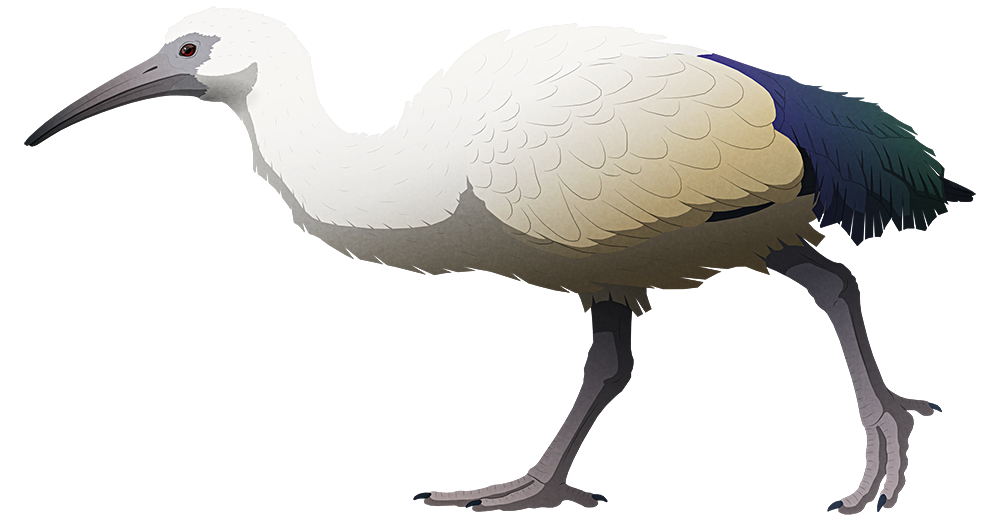The island of Réunion was formed southwest of Mauritius ony about 2-3 million years ago, and likewise developed its own vertebrate ecosystem from various birds, reptiles, and bats arriving via island hopping and rafting.
Accounts from the 1600s and 1700s of a white bird on the island known as the “Réunion solitaire” were for a long time thought to refer to a close relative of the dodo, but no dodo-like subfossil remains were ever found.
Eventually bones of a different type of bird were discovered: an ibis. Closely related to the African sacred ibis, Threskiornis solitarius was a similar size at about 65cm long (2′2″) but had a much chunkier build. Its beak was shorter and straighter than other ibises, and it had reduced flight capabilities – features that matched the old solitaire descriptions surprisingly well.
Its coloration was mostly white, merging into grey and yellow, and it had glossy or iridescent black ostrich-like plumes on its rear. It mainly lived in forests and used its beak to search through soft soil for invertebrates like worms and insects.
A combination of its island tameness and the fact that it was considered to be good eating resulted in it being heavily hunted during the 1600s, and along with pressure from invasive mammals – such as predation by cats and its eggs being eaten by pigs – it soon became a rare sight, found only in more remote highland areas of the island.
The last definite account of the Réunion ibis was in the early 1700s, and it was probably completely extinct within the first couple of decades of that century.


